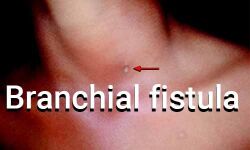- Home
- Medical news & Guidelines
- Anesthesiology
- Cardiology and CTVS
- Critical Care
- Dentistry
- Dermatology
- Diabetes and Endocrinology
- ENT
- Gastroenterology
- Medicine
- Nephrology
- Neurology
- Obstretics-Gynaecology
- Oncology
- Ophthalmology
- Orthopaedics
- Pediatrics-Neonatology
- Psychiatry
- Pulmonology
- Radiology
- Surgery
- Urology
- Laboratory Medicine
- Diet
- Nursing
- Paramedical
- Physiotherapy
- Health news
- Fact Check
- Bone Health Fact Check
- Brain Health Fact Check
- Cancer Related Fact Check
- Child Care Fact Check
- Dental and oral health fact check
- Diabetes and metabolic health fact check
- Diet and Nutrition Fact Check
- Eye and ENT Care Fact Check
- Fitness fact check
- Gut health fact check
- Heart health fact check
- Kidney health fact check
- Medical education fact check
- Men's health fact check
- Respiratory fact check
- Skin and hair care fact check
- Vaccine and Immunization fact check
- Women's health fact check
- AYUSH
- State News
- Andaman and Nicobar Islands
- Andhra Pradesh
- Arunachal Pradesh
- Assam
- Bihar
- Chandigarh
- Chattisgarh
- Dadra and Nagar Haveli
- Daman and Diu
- Delhi
- Goa
- Gujarat
- Haryana
- Himachal Pradesh
- Jammu & Kashmir
- Jharkhand
- Karnataka
- Kerala
- Ladakh
- Lakshadweep
- Madhya Pradesh
- Maharashtra
- Manipur
- Meghalaya
- Mizoram
- Nagaland
- Odisha
- Puducherry
- Punjab
- Rajasthan
- Sikkim
- Tamil Nadu
- Telangana
- Tripura
- Uttar Pradesh
- Uttrakhand
- West Bengal
- Medical Education
- Industry
Branchial Fistula- Standard Treatment Guidelines by Government of India

Ministry of Health and Family Welfare, Government of India has released Standard Treatment guidelines for Diagnosis and Treatment of Branchial Fistula.
Branchial fistulas are uncommon anomalies of embryonic development of branchial apparatus. Second branchial arch and pouch anomalies are common anomalies of branchial apparatus.
Ministry of Health and Family Welfare, government of India has released Standard Treatment guidelines for Diagnosis and Treatment of Branchial Fistula. Following are its major recommendations.
Definition: During embryonic development, the second arch grows caudally; envelop the third, fourth and sixth arches and form the cervical sinus by fusing with the skin caudal to these arches. The edges of cervical sinus fuse and the ectoderm within the fused tube disappears. Persistence of ectoderm gives rise to branchial cyst.
The branchial fistula results from the breakdown of the endoderm, usually in the second pouch. A persistent fistula of the second branchial cleft and pouch pass from the external opening in the mid or lower neck in the line of the anterior border of the sternocleidomastoid muscle, deep to platysma along the carotid sheath, then pass medially deep between the internal and external carotid arteries after crossing over the glossopharyngeal nerve and hypoglossal nerve. Finally, it opens internally in the tonsillar fossa usually on the anterior face of the upper half of the posterior pillar of the fauces or in the intratonsillar cleft.
Most of the times it is a simple sinus opening that extends up the neck for a variable distance. Complete branchial fistula with internal opening into the tonsillar region is rare.
Incidence in India: Unknown. Although branchial fistulas may occur in any age group, commonly patients present to the clinician in first and second decades of life.
Differential diagnosis: sinus from an infected lymph node
Prevention and Counseling: NA
Optimal Diagnostic Criteria, Investigations, Treatment & Referral Criteria
Clinical Diagnosis:
1. History - Diagnosis is usually made clinically. The patient complains of mucopurulent discharge from an opening in lower lateral part of neck.
2. Examination – A small punctum in the skin at the junction of upper two-third and lower one-third of the anterior border of the sternocleidomastoid muscle.
Investigations:
The tract of fistula can be diagnosed by a dye test or fistulogram and sometimes negative preoperative test might become positive under general anaesthesia because of muscle relaxation. Occasionally the fistula tract may be blocked by thick secretions or granulation tissue.
Treatment: Surgical excision
Standard Operating Procedure: As in patient surgery should be performed
Referral Criteria: depends upon competency of operating surgeon and available resources.
The above guideline has been developed by the Ministry of Health & Family Welfare, Govt. of India. Group Head Coordinator of Development Team Dr J M Hans Ex-HOD Dept. of Otorhinolaryngology Dr.RML Hospital New Delhi.
Dr Kamal Kant Kohli-MBBS, DTCD- a chest specialist with more than 30 years of practice and a flair for writing clinical articles, Dr Kamal Kant Kohli joined Medical Dialogues as a Chief Editor of Medical News. Besides writing articles, as an editor, he proofreads and verifies all the medical content published on Medical Dialogues including those coming from journals, studies,medical conferences,guidelines etc. Email: drkohli@medicaldialogues.in. Contact no. 011-43720751


